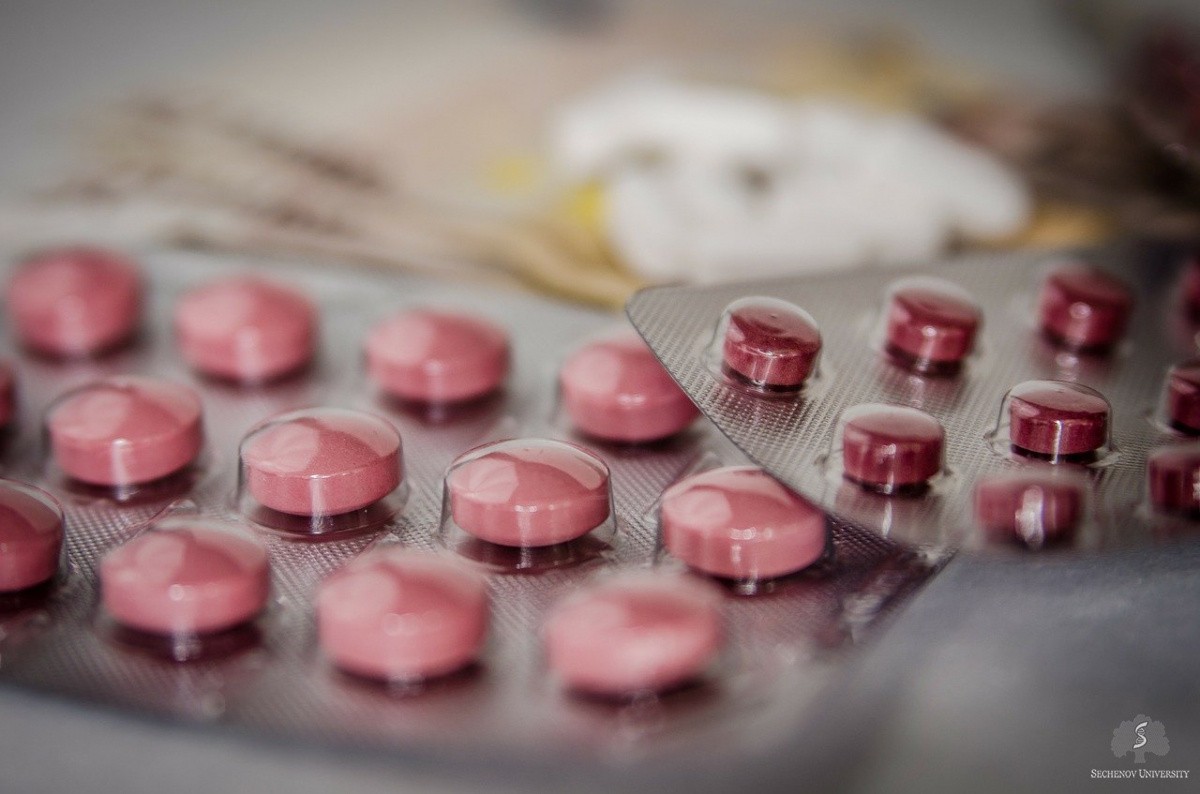Абитуриенту
- Абитуриенту
-
Обучающемуся
- Я – профессионал
- Локальные нормативные акты
- Образовательные программы
- Стоимость обучения
- Университет - обучающемуся
- Центр карьеры
- Учебный центр по маркировке
- Учеба и наука
- Школы мастерства
- Комфортная среда обучения
- Образовательные стандарты
- Стипендии и материальная поддержка
- Вакантные места
- Общежития
- Сотруднику
- Аккредитация специалистов
-
About University
- Mission & Brand Strategy
- University Leadership
- Rector's Welcome
- History
- Regulatory Documents
- Contacts
- Staff
- International Recruitment
- Partners
Applicants- Why Sechenov University
- Degree Programmes in English
- Preparatory Courses
- Non-Degree Programmes
- Transfer from other Institutions
14.09.2020How scientists identify fake drugs without even opening them?
 Counterfeit drugs are a serious problem: in the best-case scenario, they don’t help you, otherwise, your health can be endangered. Researchers from Sechenov developed a method to analyse suspicious medications without even opening the package. Their findings are to help government officials to conduct more tests of potential counterfeits, to identify them and remove from the market as early as possible.
Counterfeit drugs are a serious problem: in the best-case scenario, they don’t help you, otherwise, your health can be endangered. Researchers from Sechenov developed a method to analyse suspicious medications without even opening the package. Their findings are to help government officials to conduct more tests of potential counterfeits, to identify them and remove from the market as early as possible.
Counterfeit medications present a serious threat to public health, and this problem persists both in rich countries and in the developing world. In the last decade, healthcare policymakers and regulators around the globe have been launching initiatives to restrict the circulation of fake drugs. Sometimes counterfeit substances are made so elaborately that it is extremely hard to recognise their illegal origin. This is why doctors and scientists are trying to establish new techniques to improve and facilitate the identification of fake medications. The recent research project in this field, conducted by Sechenov University, has been reported in the journal Talanta.
The scientists used near-infrared spectroscopy (NIR), a method quite different from the analytical techniques (gas chromatography, high-performance liquid chromatography) conventionally used in the pharmaceutical industry. Interpretation of the NIR spectra normally requires additional chemometric analysis. This combination allows performing rapid measurements with almost no sample preparation. NIR provides information about the chemical composition, particle size, degree of crystallinity, humidity, and more. The method is also non-invasive, so it is possible to analyse the medicines in their original packaging, such as blisters.
Powder medicines are usually sold in a capsule form, where the active components can be found underneath two external layers — of gelatine and polyvinyl chloride. These substances are capable of generating extraneous NIR signals, thus distorting the spectrum of the target drug. The authors of the study demonstrated that the identification and quantification of the medicine could be performed despite these obstacles.
The researchers used capsules with fluconazole — a synthetic triazole with antifungal activity provided by an actual manufacturer — and suspicious medicines confiscated by the governmental officials from a pharmacy. Using NIR spectroscopy, chemometric analysis, and statistics, the authors showed that these measurements, conducted through several hindering layers of the capsule, were able to identify the characteristic spectrum of the drug. More importantly, statistical processing of the spectral data allowed to build a model that could easily point at non-original medicines during routine probing. The approach confirmed that the suspicious drug samples were indeed counterfeit.
The technique can be ‘trained’, as statistical data from original medicines can be included in the data pool. However, the study authors warn that the authorities should be careful with this — or similar — approaches. They can be used for initial scanning of medications, and if the results seem suspicious, a more in-depth investigation should be launched.
The study was performed by Sechenov University in collaboration with Roszdravnadzor (Russia’s Federal Service for Surveillance in Healthcare) and Semenov Institute of Chemical Physics (Russian Academy of Sciences).
Read more: Rodionova OYe, Titova AV, Demkin NA, Balyklova KS, Pomerantsev AL. Qualitative and quantitative analysis of counterfeit Fluconazole capsules: A non-invasive approach using NIR spectroscopy and chemometrics. Talanta (2019).
Photo credit: Pixabay 257336
Embed on website
How scientists identify fake drugs without even opening them?
Counterfeit drugs are a serious problem: in the best-case scenario, they don’t help you, otherwise, your health can be endangered. Researchers from Sechenov developed a method to analyse suspicious medications without even opening the package. Their findings are to help government officials to conduct more tests of potential counterfeits, to identify them and remove from the market as early as possible.
Counterfeit medications present a serious threat to public health, and this problem persists both in rich countries and in the developing world. In the last decade, healthcare policymakers and regulators around the globe have been launching initiatives to restrict the circulation of fake drugs. Sometimes counterfeit substances are made so elaborately that it is extremely hard to recognise their illegal origin. This is why doctors and scientists are trying to establish new techniques to improve and facilitate the identification of fake medications. The recent research project in this field, conducted by Sechenov University, has been reported in the journal Talanta.
The scientists used near-infrared spectroscopy (NIR), a method quite different from the analytical techniques (gas chromatography, high-performance liquid chromatography) conventionally used in the pharmaceutical industry. Interpretation of the NIR spectra normally requires additional chemometric analysis. This combination allows performing rapid measurements with almost no sample preparation. NIR provides information about the chemical composition, particle size, degree of crystallinity, humidity, and more. The method is also non-invasive, so it is possible to analyse the medicines in their original packaging, such as blisters.
Powder medicines are usually sold in a capsule form, where the active components can be found underneath two external layers — of gelatine and polyvinyl chloride. These substances are capable of generating extraneous NIR signals, thus distorting the spectrum of the target drug. The authors of the study demonstrated that the identification and quantification of the medicine could be performed despite these obstacles.
The researchers used capsules with fluconazole — a synthetic triazole with antifungal activity provided by an actual manufacturer — and suspicious medicines confiscated by the governmental officials from a pharmacy. Using NIR spectroscopy, chemometric analysis, and statistics, the authors showed that these measurements, conducted through several hindering layers of the capsule, were able to identify the characteristic spectrum of the drug. More importantly, statistical processing of the spectral data allowed to build a model that could easily point at non-original medicines during routine probing. The approach confirmed that the suspicious drug samples were indeed counterfeit.
The technique can be ‘trained’, as statistical data from original medicines can be included in the data pool. However, the study authors warn that the authorities should be careful with this — or similar — approaches. They can be used for initial scanning of medications, and if the results seem suspicious, a more in-depth investigation should be launched.
The study was performed by Sechenov University in collaboration with Roszdravnadzor (Russia’s Federal Service for Surveillance in Healthcare) and Semenov Institute of Chemical Physics (Russian Academy of Sciences).
Read more: Rodionova OYe, Titova AV, Demkin NA, Balyklova KS, Pomerantsev AL. Qualitative and quantitative analysis of counterfeit Fluconazole capsules: A non-invasive approach using NIR spectroscopy and chemometrics. Talanta (2019).
Photo credit: Pixabay 257336



